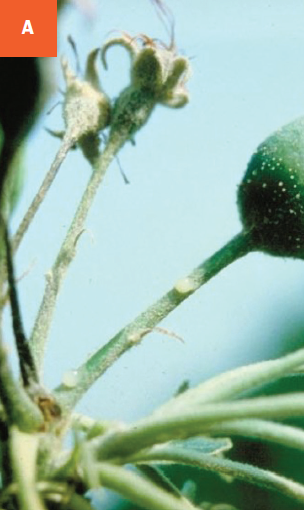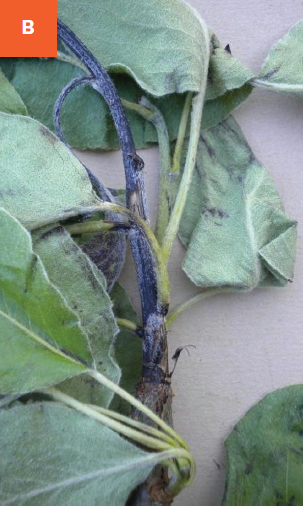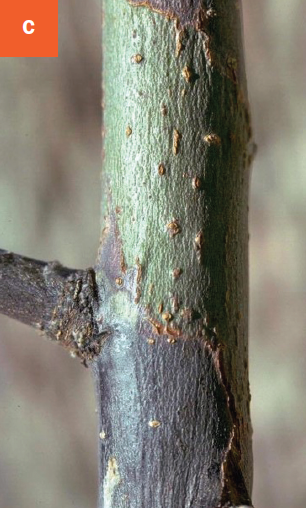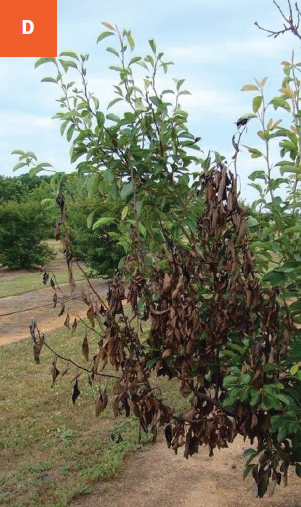Fire Blight
Erwinia amylovora (bacterium)
HOST Fire blight affects plants in the Rosaceae family including apple, pear, crabapple, mountain-ash, hawthorn, and cotoneaster
DAMAGE/SYMPTOMS Infected blossoms develop a water-soaked appearance and turn a grey-green color. Over time the tissue shrivels and turns black, giving it a burned appearance. During periods of high humidity, amber colored drops might exude from the discolored tissues. Infected shoots may wilt rapidly and form a “shepherd’s crook.” Leaves on infected branches turn brown to black and may persist on the branches during fall and winter. Sunken cankers may also develop on branches.
DISEASE CYCLE The bacteria overwinter in cankers and ooze out of infected tissues in spring when the humidity is high. Insects are attracted to the ooze and transfer the bacteria to flowers. The bacteria can also be transferred by splashing rainwater and during cultural practices (e.g., pruning). The bacteria grow when temperatures are between 70 to 80°F, multiplying and invading surrounding plant tissues.
MANAGEMENT Select disease-resistant cultivars. Prune out and remove all infected twigs and branches during dry winter weather. Make the pruning cut 10 to 12 inches below the infected area. Disinfect pruning tools between cuts with 70% ethyl alcohol or a standard household disinfectant spray to avoid spreading the bacteria. Check plants regularly in spring and prune out symptomatic tissues. Copper sprays can be applied in early spring, just before buds swell, to manage this disease. Avoid using copper products every year and strictly follow instructions on the product label. Antibiotic spray applications are not recommended in the urban setting.
A Bacteria oozing out of infected plant tissue. B Tree branch is turning black with progressing fire blight infection. C Dark, sunken canker indicates a fire blight infection. D Dieback of branches due to fire blight infection.




